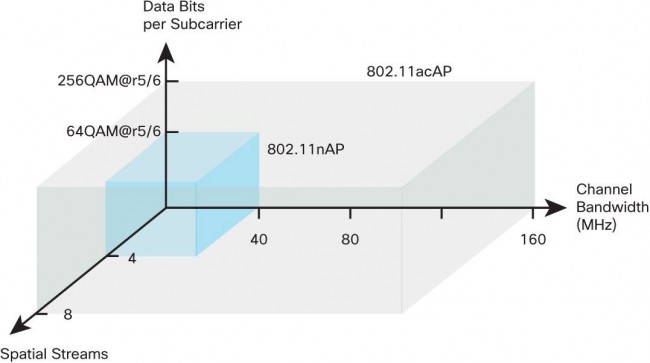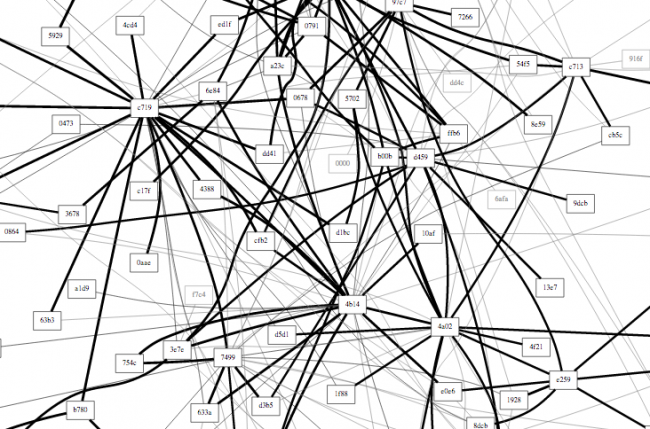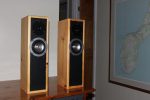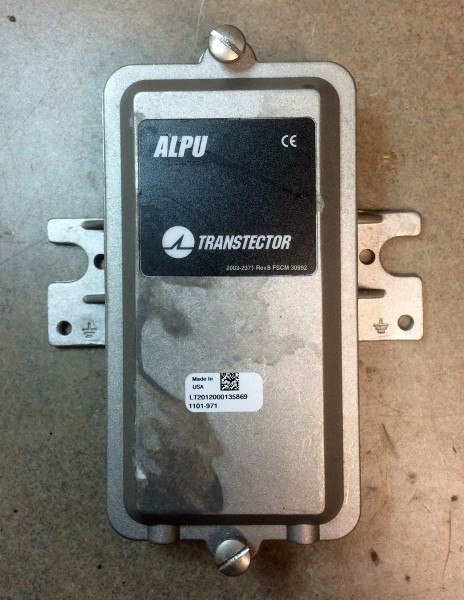Like all data-carrying technology, WLAN, or WiFi, continues to evolve into a better, faster, and more robust platform. The IEEE wireless ethernet specification 802.11ac combines all of the past developments, plus some added features, into one specification. Here are some of the highlights:
- Operation on 5 GHz only. Many more available channels in this spectrum than in 2.4 GHz
- Increased channel bonding makes wider channels carry more data. In the 5 GHz spectrum channels are 20 MHz wide and do not overlap. 802.11ac allows for 40, 60, 80 or even 160 MHz channels. This is great for short distances, longer distances will be prone to greater interference over wider channels
- Modulation schemes that allow up to 256 QAM. A 256 QAM constellation is going to look pretty crowded unless it is on a wide channel. Again, this would be good for short distances.
- Increased MIMO. Up to 8×8 MIMO (Multi In Multi Out) which can greatly improve throughput. MIMO means multiple transmitters and antennas in the same unit. The first number is the transmitter count the second number is the antenna count. Thus an 8X8 system will have eight transmitters and eight antennas. This allowed beam forming by use of phased antenna arrays, which can greatly reduce multi-path
- MU-MIMO (Multi-User MIMO). Basically, the access point sends the data frame only to the desired host, thus instead of acting like an ethernet hub sending the frame to every connected host, the AP is acting more like an ethernet switch.

The goal of all of these modifications is to get gigabit transfer rates over WLAN.
What does all of this have to do with radio broadcast, one might ask? That is a good question.
There are several applications that have to do with remote broadcasting. Many sports areas, nightclubs, or other likely places to be broadcasting from have WIFI installed. Using a laptop with an AoIP client installed not only can connect to the studio for audio delivery, but the same laptop can also use RDP or VNC to control the station’s automation computer as well. This means easier integration of the remote into voice-tracked or syndicated programming.
Secondly, wireless LAN bridges between the studio and the transmitter site can act as an STL, a backup STL, a remote control return link, a bridge for a network-connected transmitter, a VoIP phone link, IP security camera backhaul, or almost anything else that can send ethernet data. I have found it useful to simply have a computer available at the transmitter site, even if it is only to download manuals and whatnot. We have taken several old Windows XP machines and reloaded them with a Linux variant and installed them at various transmitter sites. It saves the trouble of having to download a manual on the smartphone and then page back and forth across a really small screen to read it. As for using unlicensed WiFi to link to a transmitter site; the link between the WICC studio and transmitter site runs 78 Mbps most days. This is a two-mile link over mostly water. I will say, when there is fog, the link rate drops to 32 Mbps, which is still pretty good, all things considered.
Of course, office network applications; laptops, tablets, smartphones and other personal devices.
Finally, Broadcast Engineers really need to keep abreast of networking technology. There are many, many applications for WiFi units in the broadcast industry.






Great Article!